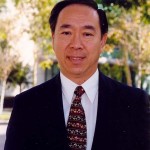Complementary and alternative medicine; physiological and bioenergetic changes associated with mind-body practices and energy therapies. – The goal of our laboratory is gain a better understanding of the biological mechanisms underlying mind-body practices and energy therapies. We hope that our work will help accelerate the integration of these complementary and alternative interventions into Western healthcare and medical education. The focus of our research is on the application of hi-tech approaches (e.g., heart rate variability analysis of electrocardiograms, independent component analysis of electroencephalograms, laser Doppler flowmetry measurement of peripheral blood flow, infrared thermography of body temperature distribution, single square voltage pulse measurement of conductance and capacitance at acupuncture points, gas discharge visualization of bioelectrical charges, single photon counting of biophoton emission, etc. ) to quantitatively study changes in physiological functions and bioenergy levels associated with the ancient mind-body practices of Qigong and Tai Chi. From our on-going studies on dozens of high-level practitioners, we find that these mind-body practices can lead to a significant increase in peripheral blood flow, a decrease in sympathetic and an increase in parasympathetic tone in the autonomic nervous system, and an elevation in body energy in the form of heat, light, and electrical charges. Some of these effects are similar to those produced by acupuncture and related therapies, and are different from those resulting from physical exercises. The result of our studies, combined with recent developments in other fields of biomedical research, are used to formulate models to explain the beneficial effects of these Qigong, Tai Chi, and other related practices and therapies on health and healing at the system, cellular, and molecular levels.
Representative Publications
- Lin, S., G. Chevalier, H. Lin, T. Ross, and P. Lin. (2006). Measurement of biophoton emission with a single photon counting system. J. Altn. & Complement. Med. 12: 210-211.
- Lin, S., G. Chevalier, T. Ross, M. Nguyen, and H. Lin (2006). Variability and specificity of the Single Square Voltage Pulse Method for measuring conductance at acupuncture points for mind-body research. J. Altn. & Complement. Med. 12: 210.
- Lin, S., Z.Y. Shen, T. Ross, G. Chevalier, and K.M. Shu (2006). Analysis of factors influencing the use of heart rate variability for evaluation of autonomic nervous function in mind/body and acupuncture research. J. Altn. & Complement. Med. 12: 223.
- Lin, S. and Z. Chen. (2007). A molecular and cellular model for benefits of increased bioenergy from Qigong/Tai Chi practice. J. Altn. & Complement. Med. 13: 905.
- Shen, Z.Y., S. Lin, Y.Q. Zhu, P. Yu, Q.H. Zhang, and M.H. Qu. (2008). Non-linear analysis and research on multi-channel EEG phase-space reconstruction at Qigong meditation. Acta Universitatis Traditionis Medicalis Sinensis Pharmacologiaeque Shanghai 22:54-56.
- Lin, S., H. Pakzamir, J. Nguyen, W. Wu, and R. Miu (2009). Comparison of blood flow and energy markers of acupuncture points on the palm. Alternative Therapies for Health & Medicine 15: S87-88.
- Qin, Z., Y.Jin, S. Lin, and N.S. Hermanowicz. (2009). A forty-five year follow-up EEG study of Qigong practice. J. Neuroscience 119: 538-552.
- Shen, Z.Y., S. Lin, P. Yu, Y.Q. Zhu, Q.H. Zhang, and M.H. Qu, (2009). The influence of respiratory frequency adjustment on heart rate variability. Practical Electrocardiology JS 18: 323-325.
- Lin, S., G.A. Orenstein, A.K. Froloff, N.H. Nguyen, D.A. Unsworth, A. Samadi, and J.L. Gartner. (2012). Pre-polarization conductance at jing-well acupoints on the hand is correlated with blood flow measured by laser Doppler flowmetry. BMC Complementary and Alternative Medicine, 12(Suppl 1): 29.
- Lin, S., T. Ross, N. Sutherland, and G.A. Orenstein. (2012). Changes in blood flow and bioenergy markers associated with traditional Chinese Medicine therapies. BMC Complementary and Alternative Medicine, 12(Suppl 1):.5.
- Shen, Z.Y., R.G. Liu, S. Lin, P. Yu, Q.H. Zhang, Y.Q. Zhu, W.L. Yu, and M.H. Qu. (2012). Relationship between cycle and morphological characteristics of night time respiratory and heart rate variability. Practical Electrocardiography 21: 157-164.
- Lin, S., Z.Y. Shen, P. Lin, and C. Amato (2013). Blood pressure is synchronized with cyclic variability of heart rate and blood pressure during Qigong breathing regulation. Altern. Complement. Med. 19: A30-31.
- Lin, S., Z.Y. Shen, G. Wu, P. Nguyen, C. Amato, P. Lin, A. To, and G. Orenstein. (2013). Electromyographic study on Tai Chi’s activation of muscles essential for fall prevention and weightlifting. Altern. Complement. Med. 19: A24.
- Lin, S. and A. Samadi. (2013). Warming up with Tai Chi increases muscle strength and endurance. Altern. Complement. Med. 19: A49.
- Zhu, Y.Q., Z.Y. Shen, S. Lin, S.B. Yan, H.B. Chen, and R.G. Liu. (2014). The influence of autonomic nerve block on rabbits’ heart rate under respiratory regulation. Practical Electrocardiography 23: 405-410.
- Li, Y., M. Yang, M. Cho, and S. Lin. (2014). D.C. electric field related to Tai Chi-induced bio-electrical changes affects actin-based movement of fibroblasts and cancer stem cells in culture. Altern. Complement. Med. 20: A29-30.



